
Greetings Friends,
Lee Point Art Competition – closes 8 April 2022
The Lee Point Art Competition is open to all Territorians aged 18 years and under. There is approx $3000 worth of prizes.
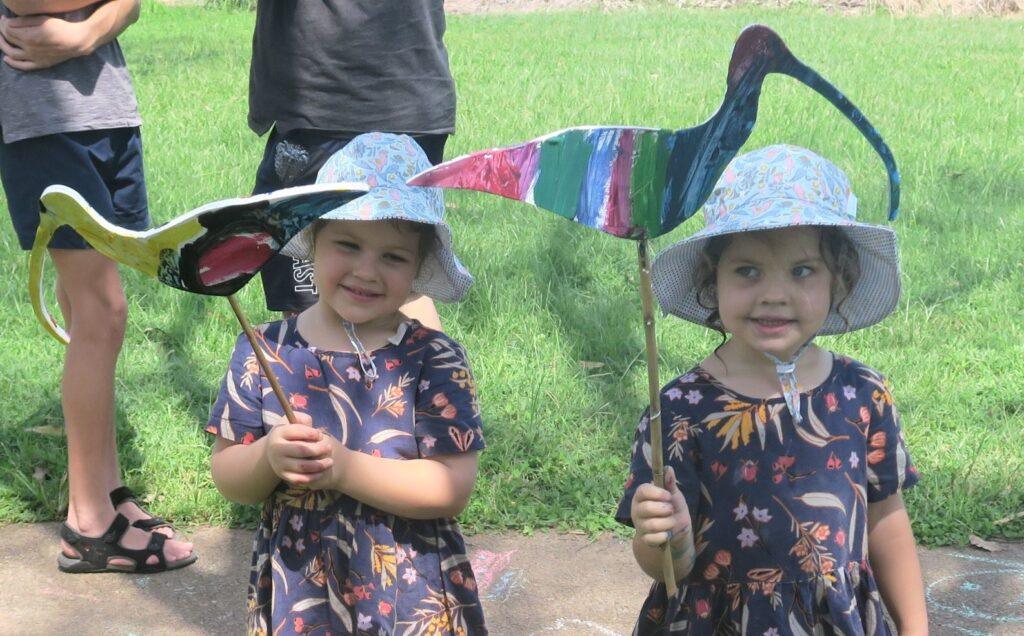
Lee Point Art Launch and Nature Walk – 8am Sunday 6 March Lee Point
A fun morning with lots of art happening. About 35 people attended. People on the nature walk saw many shorebirds through scopes plus a Lesser Frigate Bird.
Migratory shorebirds at Lee Point
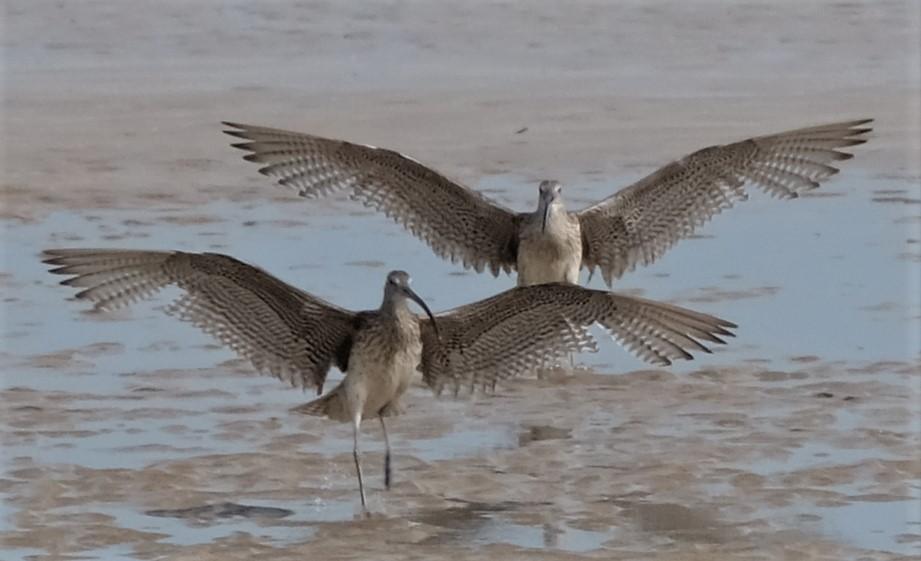
Eastern Curlews are critically endangered and the worlds largest migratory shorebird. They have started leaving Lee Point for the Artic Circle ie. Siberia (approx 10,00km away).
About one third of the (20) migratory shorebird species that visit Lee Point are threatened. Getting disturbed by dogs (and losing fuel reserves) prior to leaving affects their survival. Professor Stephen Garnett talks to the ABC at Lee Point about the threats they face: https://www.youtube.com/watch?v=sa3EPNp-IxI
Lee Point development
Much better locations exist for housing defence personnel than Lee Point ie. Northcrest. City of Darwin want works halted at Lee Point until the NT Planning Commission has completed a comprehensive Area Plan for the whole of Lee Point.
| NT Govt Approvals (as of 29 March 2022) | Stage 1 North of Muirhead (97 lots) | Stage 2 North of Lyons | Stage 3-5 North of Lyons | Stage 6-7 North of Muirhead | Stage 8 North of Lyons |
| Planning | Yes | Yes | Yes | Yes | Yes |
| Construction | Yes | No* | No | No | No |
*To date, DHA has not lodged an application with the NT Government for Stage 2 construction.
AUSTRALIAN GOVERNMENT – The previous Lyons/Muirhead (725) housing development was referred to the (independent) Public Works Commission to consider/report on its public value. This needs to happen for the current development. Ask your federal candidates; if elected, will you support a moratorium on the current DHA (800) housing development at Lee Point until the Public Works Committee has completed a report on its public benefit.
Lee Point Trivia
Q1. Which can fly the furthest non-stop?
A. Eastern Curlew B. Jetstar Dreamliner 787-8 C. Bar-tailed Godwit D. Great Knot
Fungi and soils at Lee Point
Reference is Wikipedia, images from Lee Point
All living things need carbon and fungi gets its carbon from plants. Most plants depend on fungi to get nutrients and water for their survival.
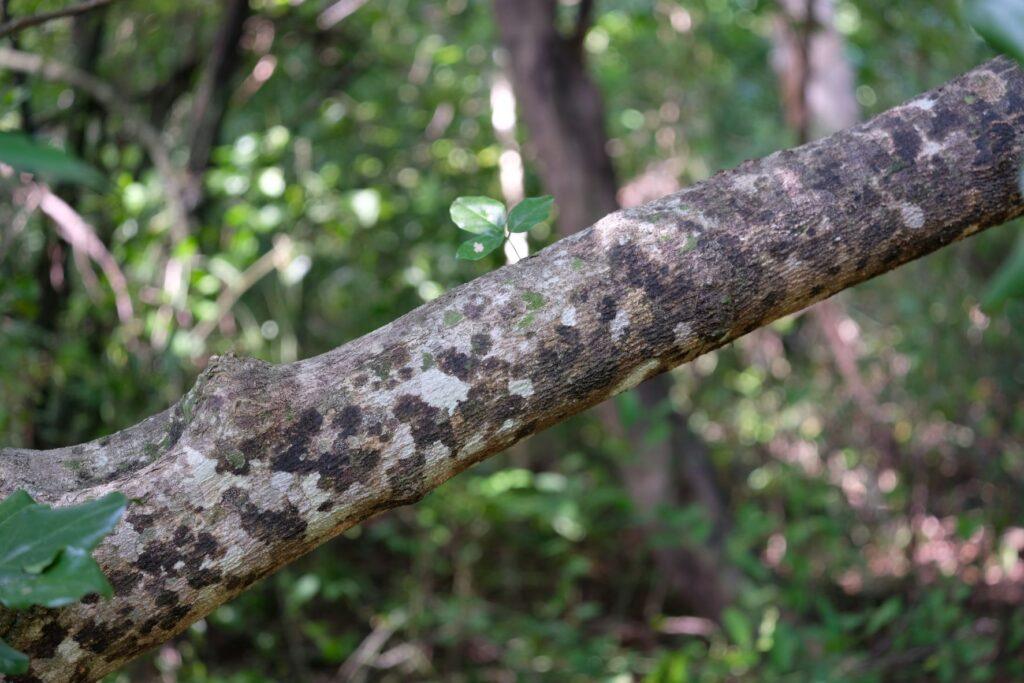
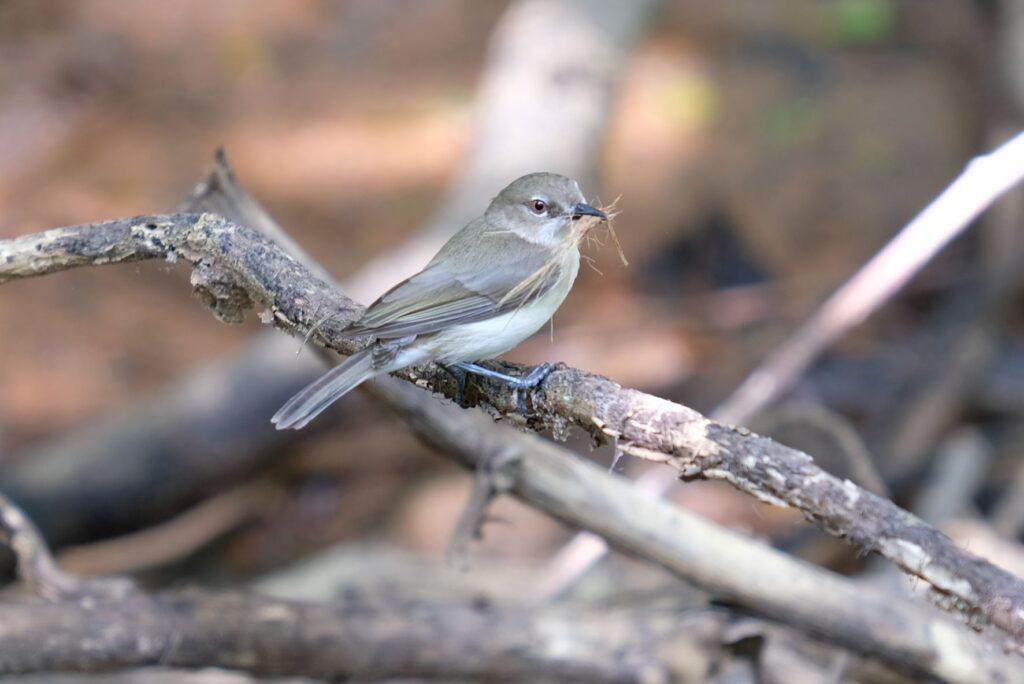
Lichens are a combination of a fungus and an algea. The fungus provide the nutrients/water and the algae carbon (from photosynthesis) for the lichen to grow. Lichens share some traits with plants but do not have roots. They first appeared over 400 million years ago (mya).
Plants first developed roots around 400 mya to help anchor themselves and get nutrients/water. Fungi is generally better at getting nutrients/water than plants. The main source of nutrients come from fungi breaking down and recycling dead organic matter.
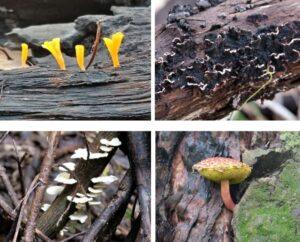
Fruiting body of a fungi in organic matter
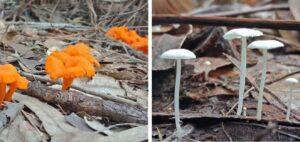
Fruiting body of a fungus in woodland soil
Soil consists of minerals (from rocks), organic matter (dead and living things – fungi and microbes), water and air. The top layer consists mainly of organic matter (called humus).
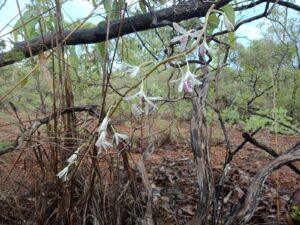
Orchid (Dipodium stenochilum) lives off fungi in the soil.
This soil (with fungi) has not been able to be replicated in a nursery hence the orchid species of Dipodium are only found in the wild.
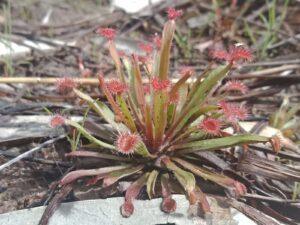
Sundew (Drosera) in a moist sandy soil – freshwater habitat
Sundews are carnivorous plants; they capture and digest insects to get enough nutrients to survive. The ideal soil mix for plants is: 40% sand, 40% silt and 20% clay (not just sand).
Home for shorebirds
Shorebirds feed on intertidal zones (depending on tides) with breaks to “rest and digest”.
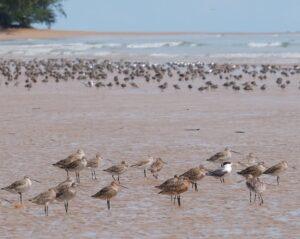
Migratory shorebirds on the Lee Point intertidal mudflats
The birds in the foreground are mainly Bar-tailed Godwits (vulnerable) and in the background mainly Great Knots (critically endangered). They are here during Aug-May.
This mudflat attracts thousands of migratory shorebirds because of its rich food source – huge numbers of invertebrates. Having a rich food source (like Lee Point) allows them to store enough fuel to make their long migrations to Siberia to breed.
The Godwits in the middle (above image) are putting on their breeding colours (dressing up to impress) and will be leaving soon.
Until next time, enjoy the wet season at Lee Point
Answer Q1. The Bar-tailed Godwit. In 2019, it flew non-stop approx. 12,000km from Alaska to New Zealand in 11 days (tracked by GPS). The Jetstar 787-8 range with full payload is 10,186km.